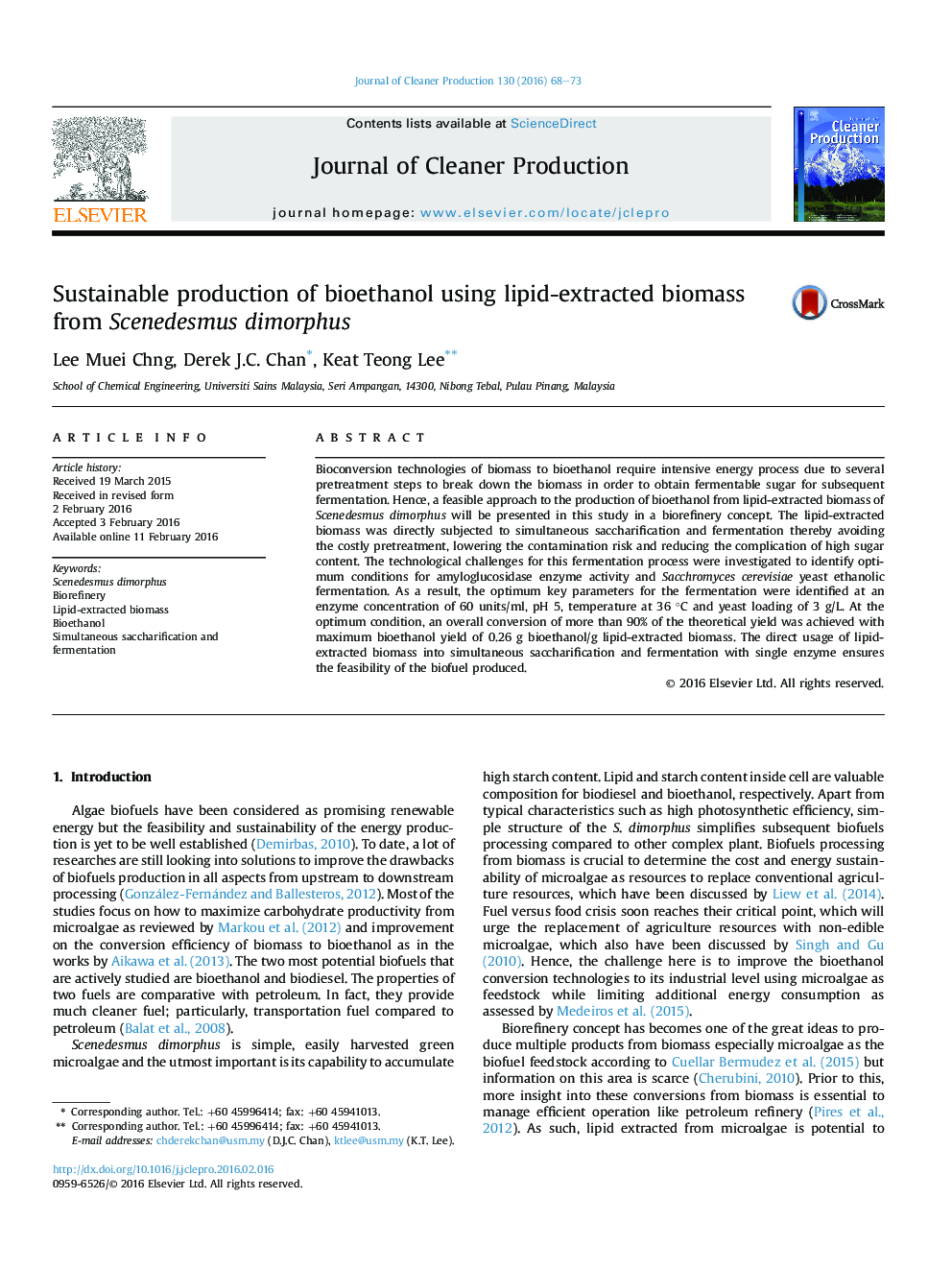| Article ID | Journal | Published Year | Pages | File Type |
|---|---|---|---|---|
| 1744037 | Journal of Cleaner Production | 2016 | 6 Pages |
•Production of bioethanol using lipid-extracted biomass from microalgae is studied.•Biomass was directly subjected to fermentation without any energy-intensive pretreatment.•Fermentation with simultaneous saccharification relies on reaction condition.•Fermentation conditions are altered for optimum activity of enzyme and yeast.
Bioconversion technologies of biomass to bioethanol require intensive energy process due to several pretreatment steps to break down the biomass in order to obtain fermentable sugar for subsequent fermentation. Hence, a feasible approach to the production of bioethanol from lipid-extracted biomass of Scenedesmus dimorphus will be presented in this study in a biorefinery concept. The lipid-extracted biomass was directly subjected to simultaneous saccharification and fermentation thereby avoiding the costly pretreatment, lowering the contamination risk and reducing the complication of high sugar content. The technological challenges for this fermentation process were investigated to identify optimum conditions for amyloglucosidase enzyme activity and Sacchromyces cerevisiae yeast ethanolic fermentation. As a result, the optimum key parameters for the fermentation were identified at an enzyme concentration of 60 units/ml, pH 5, temperature at 36 °C and yeast loading of 3 g/L. At the optimum condition, an overall conversion of more than 90% of the theoretical yield was achieved with maximum bioethanol yield of 0.26 g bioethanol/g lipid-extracted biomass. The direct usage of lipid-extracted biomass into simultaneous saccharification and fermentation with single enzyme ensures the feasibility of the biofuel produced.
